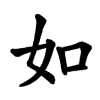Definify.com
Definition 2025
秋
秋
Translingual
| Stroke order | |||
|---|---|---|---|
| | |||
| Stroke order | |||
|---|---|---|---|

| |||
Han character
秋 (radical 115 禾+4, 9 strokes, cangjie input 竹木火 (HDF), four-corner 29980, composition ⿰禾火)
Derived characters
- 鍬, 𤋦
References
- KangXi: page 850, character 6
- Dai Kanwa Jiten: character 24940
- Dae Jaweon: page 1273, character 2
- Hanyu Da Zidian: volume 4, page 2595, character 5
- Unihan data for U+79CB
Chinese
Etymology 1
|
simp. and trad. |
秋 | |
|---|---|---|
| alt. forms | ||
Glyph origin
| Historical forms of the character 秋
| |
|---|---|
| Large seal script | Small seal script |
 |
 |
| Characters in the same phonetic series (秋) (Zhengzhang, 2003) | |
|---|---|
| Old Chinese | |
| 鍫 | *sʰew |
| 篍 | *sʰiw, *sʰiws, *sʰɯw |
| 愀 | *sʰiwʔ, *zɯwʔ |
| 湫 | *ʔsliwʔ, *ʔsɯw, *sʰɯw, *zɯwʔ |
| 揪 | *ʔsɯw |
| 揫 | *ʔsɯw |
| 啾 | *ʔsɯw |
| 鬏 | *ʔsɯw |
| 秋 | *sʰɯw |
| 鰍 | *sʰɯw |
| 楸 | *sʰɯw |
| 秌 | *sʰɯw |
| 鞦 | *sʰɯw |
| 鶖 | *sʰɯw |
| 萩 | *sʰɯw |
| 甃 | *ʔsrɯws |
| 醔 | *sʰrɯw |
| 愁 | *zrɯw |
| 僽 | *zrɯws |
Ideogrammic compound (會意) : 禾 (“grain”) + 火 (“fire”). The oracle bone forms and bronze inscriptions show the pictogram (象形) of a cricket.
Pronunciation
- Mandarin
- Cantonese (Jyutping): cau1
- Hakka (Sixian, PFS): chhiû
- Min Dong (BUC): chiŭ
- Min Nan (POJ): chhiu
- Wu (Wiktionary): qieu (T1)
- Mandarin
- (Standard Chinese, Beijing)+
- Pinyin:
- Zhuyin: ㄑㄧㄡ
- Wade-Giles: ch'iu1
- Gwoyeu Romatzyh: chiou
- IPA (key): /t͡ɕʰi̯oʊ̯⁵⁵/
-

- (Standard Chinese, Beijing)+
- Cantonese
- (Standard Cantonese, Guangzhou)+
- Jyutping: cau1
- Yale: chāu
- Cantonese Pinyin: tsau1
- IPA (key): /t͡sʰɐu̯⁵⁵/
- (Standard Cantonese, Guangzhou)+
- Hakka
- (Sixian, incl. Miaoli and Meinong)
- Pha̍k-fa-sṳ: chhiû
- Hakka Romanization System: qiu´
- Hagfa Pinyim: qiu1
- IPA: /t͡ɕʰi̯u²⁴/
- (Sixian, incl. Miaoli and Meinong)
- Min Dong
- (Fuzhou)
- Bàng-uâ-cê: chiŭ
- IPA (key): /t͡sʰieu⁵⁵/
- (Fuzhou)
- Min Nan
- (Hokkien)
- Pe̍h-ōe-jī: chhiu
- Tâi-lô: tshiu
- Phofsit Daibuun: chiw
- IPA (Xiamen): /t͡ɕʰiu⁴⁴/
- IPA (Quanzhou): /t͡ɕʰiu³³/
- IPA (Zhangzhou): /t͡ɕʰiu⁴⁴/
- IPA (Taipei): /t͡ɕʰiu⁴⁴/
- IPA (Kaohsiung): /t͡ɕʰiu⁴⁴/
- (Hokkien)
- Wu
- (Shanghainese)
- Wiktionary: qieu (T1)
- IPA (key): /t͡ɕʰiɜ⁵³/
- (Shanghainese)
- Dialectal data▼
| Variety | Location | 秋 |
|---|---|---|
| Mandarin | Beijing | /t͡ɕʰiou⁵⁵/ |
| Harbin | /t͡ɕʰiou⁴⁴/ | |
| Tianjin | /t͡ɕʰiou²¹/ | |
| Jinan | /t͡ɕʰiou²¹³/ | |
| Qingdao | /t͡sʰiou²¹³/ | |
| Zhengzhou | /t͡sʰiou²⁴/ | |
| Xi'an | /t͡ɕʰiou²¹/ | |
| Xining | /t͡ɕʰiɯ⁴⁴/ | |
| Yinchuan | /t͡ɕʰiəu⁴⁴/ | |
| Lanzhou | /t͡ɕʰiou³¹/ | |
| Ürümqi | /t͡ɕʰiɤu⁴⁴/ | |
| Wuhan | /t͡ɕʰʰiəu⁵⁵/ | |
| Chengdu | /t͡ɕʰiəu⁵⁵/ | |
| Guiyang | /t͡ɕʰiəu⁵⁵/ | |
| Kunming | /t͡ɕʰiəu⁴⁴/ | |
| Nanjing | /t͡sʰiəɯ³¹/ | |
| Hefei | /t͡ɕʰiɯ²¹/ | |
| Jin | Taiyuan | /t͡ɕʰiəu¹¹/ |
| Pingyao | /t͡ɕʰiəu¹³/ | |
| Hohhot | /t͡ɕʰiəu³¹/ | |
| Wu | Shanghai | /t͡ɕʰiɤ⁵³/ |
| Suzhou | /t͡sʰɤ⁵⁵/ | |
| Hangzhou | /t͡ɕʰiø³³/ | |
| Wenzhou | /t͡ɕʰɤu³³/ | |
| Hui | Shexian | /t͡sʰiu³¹/ |
| Tunxi | /t͡sʰiu¹¹/ | |
| Xiang | Changsha | /t͡sʰiəu³³/ |
| Xiangtan | /t͡sʰiəɯ³³/ | |
| Gan | Nanchang | /t͡ɕʰiu⁴²/ |
| Hakka | Meixian | /t͡sʰiu⁴⁴/ |
| Taoyuan | /t͡sʰiu²⁴/ | |
| Cantonese | Guangzhou | /t͡sʰɐu⁵³/ |
| Nanning | /t͡sʰɐu⁵⁵/ | |
| Hong Kong | /t͡sʰɐu⁵⁵/ | |
| Min | Xiamen (Min Nan) | /t͡sʰiu⁵⁵/ |
| Fuzhou (Min Dong) | /t͡sʰieu⁴⁴/ | |
| Jian'ou (Min Bei) | /t͡sʰiu⁵⁴/ | |
| Shantou (Min Nan) | /t͡sʰiu³³/ | |
| Haikou (Min Nan) | /siu²³/ |
| Rime | |
|---|---|
| Character | 秋 |
| Reading # | 1/1 |
| Initial (聲) | 清 (14) |
| Final (韻) | 尤 (136) |
| Tone (調) | Level (Ø) |
| Openness (開合) | Open |
| Division (等) | III |
| Fanqie | 七由切 |
| Reconstructions | |
| Zhengzhang Shangfang |
/t͡sʰɨu/ |
| Pan Wuyun |
/t͡sʰiu/ |
| Shao Rongfen |
/t͡sʰiəu/ |
| Edwin Pulleyblank |
/t͡sʰuw/ |
| Li Rong |
/t͡sʰiu/ |
| Wang Li |
/t͡sʰĭəu/ |
| Bernard Karlgren |
/t͡sʰi̯ə̯u/ |
| Expected Mandarin Reflex |
qiū |
| Baxter-Sagart system 1.1 (2014) | |
|---|---|
| Character | 秋 |
| Reading # | 1/1 |
| Modern Beijing (Pinyin) |
qiū |
| Middle Chinese |
‹ tshjuw › |
| Old Chinese |
/*tsʰiw/ |
| English | autumn; crop |
Notes for Old Chinese notations in the Baxter-Sagart system: * Parentheses "()" indicate uncertain presence; | |
| Zhengzhang system (2003) | |
|---|---|
| Character | 秋 |
| Reading # | 1/1 |
| No. | 10537 |
| Phonetic component |
秋 |
| Rime group |
幽 |
| Rime subdivision |
2 |
| Corresponding MC rime |
秋 |
| Old Chinese |
/*sʰɯw/ |
Definitions
秋
See also
| Seasons in Chinese · 四季 (sìjì) (layout · text) | |||
|---|---|---|---|
| 春 (chūn, “spring”) | 夏 (xià, “summer”) | 秋 (“fall; autumn”) | 冬 (dōng, “winter”) |
Compounds
|
|
|
Etymology 2
| For pronunciation and definitions of 秋 – see 鞦. (This character, 秋, is the simplified form of 鞦.) |
Notes:
|
Japanese
Kanji
Readings
Compounds
|
Etymology
| Kanji in this term |
|---|
| 秋 |
|
あき Grade: 2 |
| kun'yomi |
From Old Japanese. Likely cognate with 明き (aki, “bright”), 赤 (aka, “red”), 飽きる (akiru, “to become full up”, possibly in reference to the harvest), 空く (aku, “to become empty”), 開く (aku, “to open up”). However, the exact relationship of these terms remains unclear.
Pronunciation
Noun
Synonyms
- 秋季 (shūki)
- 秋期 (shūki)
Derived terms
|
See also
| Seasons in Japanese · 四季 (shiki) (layout · text) | |||
|---|---|---|---|
| 春 (haru, “spring”) | 夏 (natsu, “summer”) | 秋 (aki, “fall; autumn”) | 冬 (fuyu, “winter”) |
References
Korean
Hanja
秋 • (chu)
Eumhun:
- Sound (hangeul): 추 (revised: chu, McCune-Reischauer: ch'u, Yale: chwu)
- Name (hangeul): 가을추 (Yale: kaulchwu)
- This term needs a translation to English. Please help out and add a translation, then remove the text
{{rfdef}}.
Vietnamese
Han character
秋 (thu)
- This term needs a translation to English. Please help out and add a translation, then remove the text
{{rfdef}}.